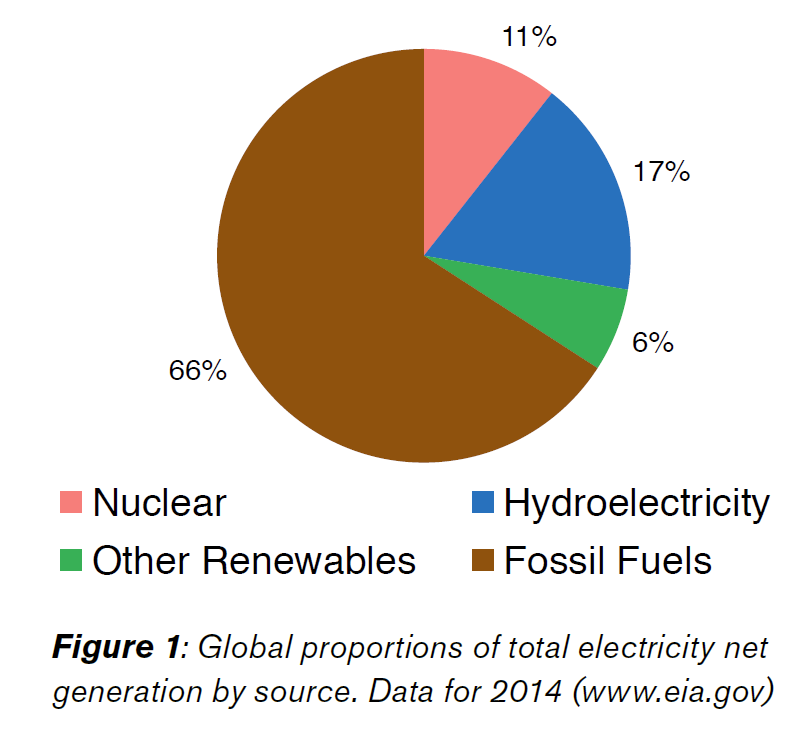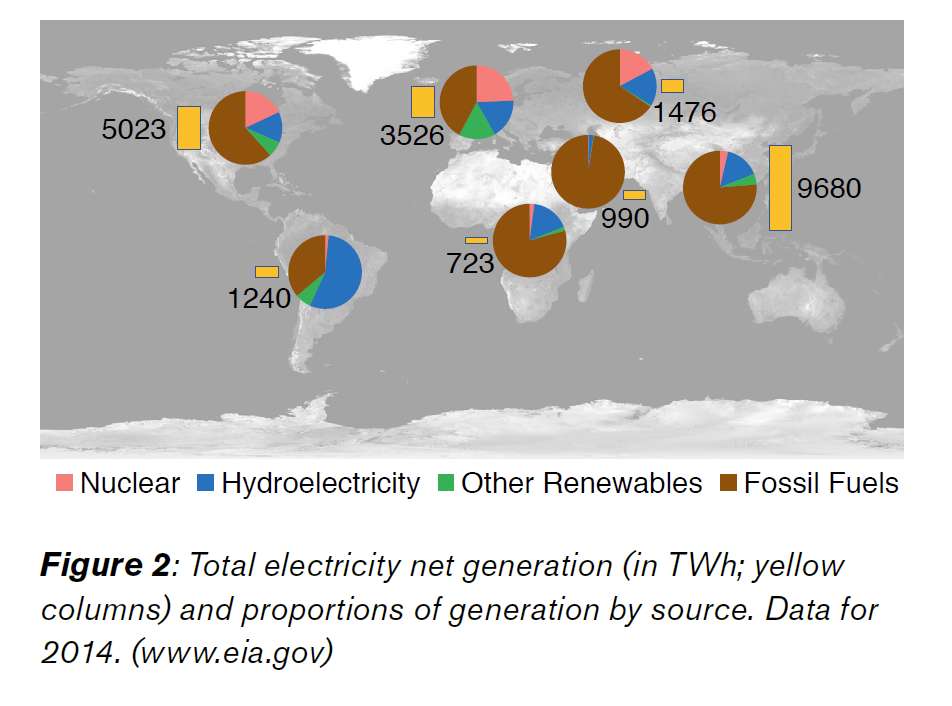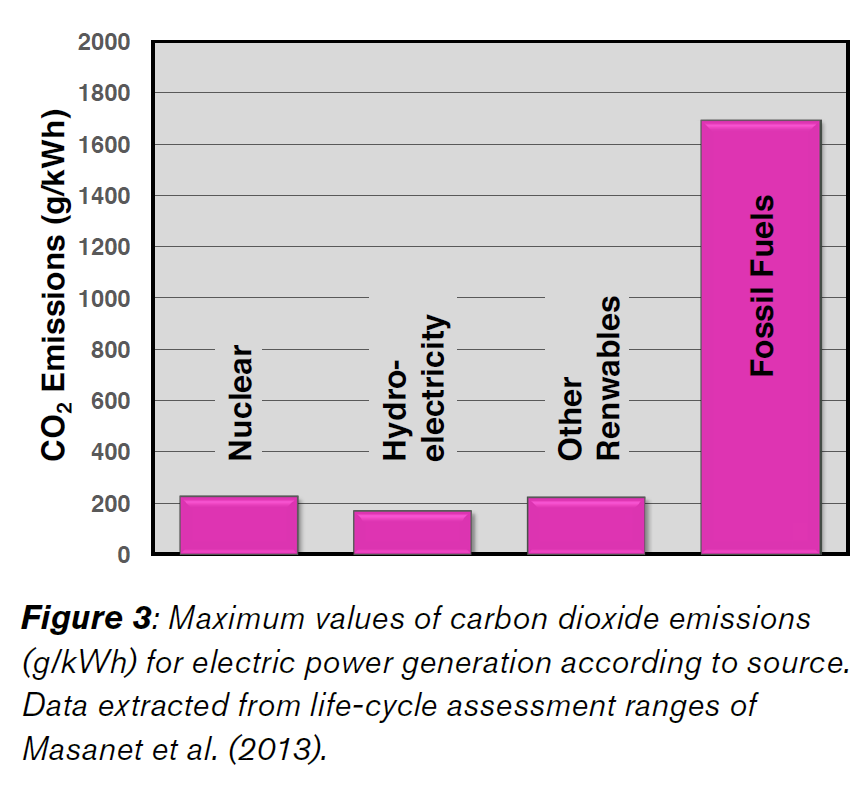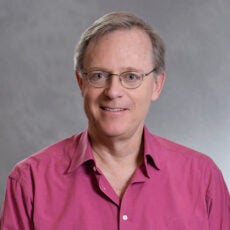
From economic to environmental to sociological to geopolitical—there are many factors that influence a nation's policies on nuclear power.
Nuclear power currently provides over 11 percent of the world’s electricity, its proportion varying from less than 1 percent in the Middle East to 19 percent in the U.S. and 24 percent in Europe (Figs. 1,2). However, the future role of nuclear power in the electricity mix of individual countries is challenging to predict, as it depends on many factors. Economics is key, but politics and public perception also play substantial roles along the decision path to pursue or avoid nuclear power.

During the disaster at the Fukushima Daiichi nuclear power plant in 2011, six workers died for various reasons, including cardiovascular disease, during the containment efforts or work to stabilize the earthquake and tsunami damage to the site; approximately six workers received radiation doses at or above legal “occupational lifetime limits;” and about 175 received “significant” radiation doses. The earthquake and tsunami, which initiated the disaster at the power plant, directly killed more than 18,500 people. But it is the power plant disaster that sticks in people’s minds.
Japan’s reaction to the Fukushima Daiichi accident was swift and decisive. The government responded to public opinion by mothballing the country’s 50 nuclear reactors, imperilling the national economy, as the country became reliant upon much more expensive sources of electricity. Around the world, international organizations, governments, regulators, and operators reviewed laws and practices. Some, like the United States, found their systems to be robust. Public backlash was varied and led to different responses in different countries. Germany pushed forward its commitment to abandon nuclear power. China pursued its program of building new nuclear reactors. In the U.S., the combination of the accident and the discovery of low-cost gas reserves stalled a budding nuclear power resurgence.
Now, about five years later, nuclear power is ascendant in much of the world. Japan is recommissioning most of its reactor fleet while public opposition to nuclear power has softened. China, India, and other developing countries are racing to build nuclear reactors to meet growing energy needs while minimizing climate impact. Countries like China and Russia are aggressively leveraging their own nuclear energy capabilities to capitalize on the growing global nuclear power market.

In this policy digest, we explore the main factors countries have considered when deciding whether or not to employ nuclear power. We cite examples and provide insights into the sometimes changing nature of this commitment. We address the economics and politics of nuclear power; energy demand and security of supply; nuclear non-proliferation and defense policy; environmental considerations; technology advances; and the sociopolitical context.
Economics and Politics of Nuclear Power
Cost Competitiveness
According to the Organisation for Economic Co-operation and Development (OECD) International Energy Agency and the OECD Nuclear Energy Agency, there is no single energy technology that is the cheapest under all circumstances (IEA&NEA 2015a; IEA&NEA 2015b). The relative economic competitiveness of different technologies depends on many factors, including, but not limited to, the type of market and the availability of domestic resources. For example, in the United States, the current availability of low-cost natural gas has resulted in the closure of several nuclear power plants and coal plants in areas that operate liberalized markets.
The International Energy Agency also estimated that the levelised cost of generating electricity (which includes construction, operation, waste and decommissioning costs) using wind or solar photovoltaics was 22-40 percent higher than that from nuclear power (IEA&NEA 2015a; IEA&NEA 2015b). So, unless carbon capture and storage becomes economically feasible and is implemented on a large scale in the fossil-fuel sector, nuclear power will be key to a clean-energy future (IEA 2016).
Interestingly, the International Energy Agency suggests that future cost assessments will have to monetize and include “social,” “full,” or “external” costs, such as climate, air quality, and waste (including particulate matter and fly ash from coal combustion). This will likely make low-emission technologies, including nuclear power, more competitive.
Projection of Economic and Political Influence
Geopolitical considerations have a definite effect on the economics of nuclear power. Nuclear reactors take approximately 10 years to plan and build, and are designed to operate for up to 80 years, with waste management timelines extending over centuries. Vendor nations (e.g., Russia, China) and vendor companies (e.g., those based in France and the U.S.) sometimes offer deals on nuclear reactors, which include: assistance with financing (sometimes in exchange for part-ownership), guaranteed pricing of fuel for decades to come, and guaranteed waste disposal routes. Such deals can give vendors long-term influence over customer nations.
Russia actively exports and promotes the export of its nuclear goods and services around the world (RT 2016; WNA 2017e). In December 2015, Rosatom (a Russian state corporation) announced that it had orders for 34 nuclear power reactors in 13 countries and was negotiating for more. Clearly Russia is interested in generating export income, but it may also be interested in extending its political influence. China also has a high-level policy of exporting nuclear technology including nuclear reactors, enrichment services, fuel fabrication, recycling and disposal (WNA 2017b). Once again, China may have dual goals for this activity.
Customer nations, having decided to use or extend their use of nuclear power, may choose a vendor partly to make or strengthen a political alliance. This premise may be part of the reason that Russian nuclear reactors are being built in Belarus and Finland and Chinese nuclear reactors are being built in Pakistan (WNA 2017a; WNA 2017b; WNA 2017c; WNA 2017e).
Economic incentives provided by vendors can make nuclear power attractive to developing nations, and therefore may account for the developing nations which have committed to or currently are considering nuclear power (WNA 2017a).
Increasing Demand for Energy and Ensuring Continuity of Supply
As populations increase so does their demand for energy. Overall the world’s population is expected to grow from approximately 7 billion in 2011 to approximately 9 billion in 2040, with most of the growth occurring in the Asia-Pacific region (EIA 2016). India and China plan to include substantial amounts of new nuclear power in their future energy mixes (WNA 2016a; WNA 2017b), in part as a response to their anticipated dramatic population increases.
As a first step toward improving their economic situation, countries (especially developing countries) will often seek to increase the availability of electricity to their citizens. This reflects the facts that wealthy developed countries are usually based on industry or information technologies (rather than agriculture) and that wealthy countries use larger amounts of energy per capita than developing nations (EEA 2016). Some nations, like Jordan, are seeking to improve their economic situation by increasing their energy supply and including nuclear power in their energy mix (WNA 2017a).
To increase energy security (continuity of supply), countries sometimes seek to diversify their energy supply. This driver may partly explain the United Arab Emirates’ decision to establish a nuclear power program and Finland’s decision to expand its nuclear power program (WNA 2017a; WNA 2017c).
Nuclear Non-Proliferation and Defense Policy
There is global interest in preventing the proliferation of nuclear weapons. Currently, there are 91 signatory nations to the “Treaty on the Non-Proliferation of Nuclear Weapons.”
The routine operation of nuclear power reactors or other reactors operated for peaceful uses1 does not generate separated material suitable for nuclear weapon creation. However, weapons material can be produced during the enrichment and reprocessing stages of the nuclear fuel cycle. Consequently, nations with current enrichment and reprocessing capability (e.g., U.S.) may choose to provide commercial services to other countries, to ensure that those other countries do not feel the need to develop their own enrichment or reprocessing technologies.
Nations with nuclear-weapons programs might choose to support domestic nuclear energy in order to sustain a large pool of personnel from which to draw talent for their defense programs. This driver, along with energy security and environmental considerations, may have contributed to the United Kingdom’s decision to revitalize its nuclear power industry.
Environmental Considerations
Combatting Climate Change
Cutting greenhouse gas emissions, especially carbon dioxide, has become a major factor in energy policy in many countries (IEA 2016; UN 2015a; UN 2015b). This is because about 70 percent of all greenhouse gas emissions originating from human activity are due to energy extraction, transformation, and consumption (DOE 2016; NEA 2015).
Currently, electricity generation contributes to approximately 30 percent of the total human-caused greenhouse gas emissions (NEA 2015). Essentially, this is because the energy sector is dominated by fossil fuels (especially coal and gas, Figs. 1 and 2), and fossil fuels result in significantly higher emissions per kilowatt-hour than nuclear and renewable energy (Fig. 3). Consequently, cuts to the usage of fossil fuel in the power sector would have a substantial effect on global greenhouse gas emissions.

Nuclear power is a low-carbon low-emission electricity source. It is already the largest low-carbon source of electricity in OECD countries, and currently most of the OECD countries have policies in place that aim at further progressive decarbonization of their power sectors by 2050 (NEA 2015). Some renewable sources (e.g., geothermal or hydropower) are able to provide dispatchable electricity—electricity that can be provided at any time. But the market share of geothermal is unlikely to increase dramatically over the next few decades and hydropower can only be used in select countries (NEA 2015). Therefore, unless carbon capture and storage becomes viable on a grand scale, nuclear power may be key to a clean-energy future (IEA 2016).
Air Quality
Severe air pollution, found in major developing world cities like Beijing and New Delhi, incurs large healthcare costs and lost productivity for nations, as well as health impacts for citizens (WHO 2014; WHO 2016). Consequently, improving air quality can be an important driver of energy policy. For example, under its 2016-2020 Five-Year Plan, China plans to reduce its energy usage and the air pollution caused by energy production by: shifting the focus of its economy toward the service and knowledge sectors; increasing energy efficiency; closing its “dirtiest” coal-fired plants and building new, cleaner ones; and increasing the use of low-carbon energy technologies—including nuclear power (Bloomberg 2015; CCTV 2017; CNTV 2015; WNA 2017b; World Bank 2016).
Technology Advances
Currently, a considerable multilateral effort is directed at developing the next generation of nuclear reactors (e.g., IAEA, Generation IV International Forum, and International Framework for Nuclear Energy Cooperation). The developers aim to make the next generation of nuclear reactors even more safe, secure and proliferation-resistant than current nuclear reactors; reduce electricity costs; and ensure the optimum usage of natural resources.2 The Generation IV International Forum (2001) additionally seeks to increase public confidence in nuclear power.
Various countries and manufacturers are currently also developing small modular nuclear reactors (NEA 2016). It is anticipated that these reactors will offer a lower initial capital investment, greater scalability, and siting flexibility, and additionally, that they could be utilized in locations unable to accommodate more traditional larger reactors (e.g., in highly populated areas) or in locations with low-capacity grids or limited energy needs (e.g., small isolated communities, mine sites, or island communities).
The developers of these two new reactor types hope to generate expanded political and public acceptance for these technologies.
Sociopolitical Factors
Local Support
Data show that the perceived risks associated with nuclear power and nuclear reactors drop with familiarity.
In the United States, a series of surveys conducted by Bisconti-Quest between 2005 and 2015 showed that 86-90 percent of the people living within 16 km of a nuclear power plant (“nuclear power neighbors”) view nuclear power favorably (WNA 2016c). The mid-2015 surveys further showed that: 69 percent of nuclear power neighbors would accept a new reactor being built there; 83 percent favored the use of nuclear power; 90 percent believed that nuclear energy will be important in meeting the U.S.’s electricity needs in the years ahead; and 60 percent believed it will be very important. These figures compare with the 2015 Bisconti-Quest survey of the general U.S. population, where only 68 percent were in favor of the use of nuclear power (27 percent strongly so). In 2015, strong opposition to nuclear power was 8 percent among nuclear power neighbors and 14 percent more widely.
In November 2016, the Swiss people rejected a referendum to force early closure of Swiss nuclear reactors with an overall vote of 54 percent to 46 percent (EC 2017).3 The “no” vote was strongest (up to 89.7 percent) in those communities directly around the nuclear power plants, reflecting job opportunities and tax incentives (SRF 2016).4
Safety
After the Fukushima Daiichi accident, various safety reviews were instituted in the U.S., but these did not result in any significant policy changes (DOE 2015; IAEA 2016; NEA 2017; WNA 2016c). Currently, the U.S.’s usage of nuclear power is expected to slowly decrease to 2050 due to the increasing use of cheap domestic shale gas and the retirement of aging nuclear reactors.
Europe’s response to the Fukushima Daiichi accident was heterogeneous (NEA 2017): Germany decided on early closure of its nuclear reactors, and Switzerland decided not to continue its use of nuclear power beyond the lifetime of its current plants (WNA 2016b; WNA 2017d). However, Russia is moving steadily forward with plans for expansion of nuclear energy in its domestic energy mix (IAEA 2017c; WNA 2017e) and world-wide export of nuclear goods and services (see above). Overall in Western Europe, nuclear power is expected to show a slow decline to 2050 (largely coinciding with the retirement of aging nuclear reactors), while in Eastern Europe nuclear power will likely show a slow increase (IEA 2016).
In other regions, the Fukushima Daiichi accident had limited impact on energy policies (NEA 2017): for example, both China (IAEA 2017a; WNA 2017b) and India (IAEA 2017b; WNA 2016a) plan to significantly increase their electricity generation and usage of nuclear power. More generally, Latin America, Africa, the Middle East, South Asia, South East Asia and the Far East are all expected to show substantial growth in nuclear power generation to 2050 (IAEA 2016).
It is possible that the variation in policy responses to the Fukushima Daiichi accident reflects cultural attitudes, such as level of trust in the federal governments and regulators, and attitude to risk.
Nuclear Waste Disposal
The management of spent nuclear fuel and radioactive waste is straightforward from technical and scientific perspectives. However, it can be publicly and politically controversial. In the U.S., opposition to a permanent nuclear waste storage site at Yucca Mountain in Nevada led to cancellation of the project in spite of billions of dollars of investment.
Currently, many nations have management strategies in place or under development. For example, the EU Council Directive on Radioactive Waste and Spent Fuel Management (Euratom 2011) requires that EU countries:
- Have a national policy
- Draw up national programs for the disposal of nuclear waste, including plans for the construction of nuclear waste disposal facilities
- Provide relevant information on nuclear waste to the public
- Invite international peer reviews at least every ten years
The EU also specifies that export of nuclear waste to countries outside the EU will be allowed only under strict conditions.
Finland has built a repository for low- and intermediate-level nuclear waste and is currently building a repository for spent nuclear fuel (WNA 2017c); Sweden is planning a repository for spent nuclear fuel (WNA 2017f); and the U.S., France, and other countries have substantial waste management funds. Nuclear newcomers are increasingly negotiating fuel take-back arrangements with suppliers.
Nonetheless, creation and management of spent nuclear fuel and radioactive waste as well as transport of radioactive materials are still perceived as significant risks by some members of the public and consequently by some governments.
Concluding Comments
This policy brief discussed the main factors that nations have considered when deciding their policies on nuclear power. In summary, policy drivers can include the following.
- Economic factors including: the type of domestic electricity markets a nation has or is encouraging, domestic reserves and resources, subsidies etc.
- Political factors such as a nation’s: intent to expand its political or economic linkages through trade; desire to maintain its nuclear technology competency; or stance on nuclear weapons proliferation.
- The necessity to service the electricity needs of a rapidly expanding population.
- The aspirations of a nation to improve its economic situation or its citizen’s standard of living.
- The intent of a nation to ensure diversity or security of electricity supply.
- Environmental factors such as: a nation’s commitment to mitigating climate change (by using low-carbon nuclear electricity to reduce greenhouse gas emissions) or to improving air quality.
- A nation’s attitudes to and trust in technological advances.
- Sociological factors such as citizens’ familiarity with nuclear power and their attitudes about risk and benefit.
Individual nations have considered and may consider all, some or none of these factors and will weigh them according to their own needs and beliefs.
Given the range of factors that affect nuclear power policy in individual countries, it is difficult to accurately predict the global future of nuclear power. However, it is is broadly expected that nuclear power usage to 2050 will likely increase in developing countries and Eastern Europe, but slowly decrease in the U.S. and Western Europe [NEA 2017].
Katherine Smith
Director, Environmental Research InstituteKatherine Smith is the director of the environmental research institute of the supervising scientist for the Australian Government. In 2016-2017, Smith was a visiting scholar at the Kleinman Center.
Reto Gieré
Professor, Earth and Environmental ScienceReto Gieré is a professor at the Department of Earth and Environmental Science and Center for Excellence in Environmental Toxicology at the University of Pennsylvania.
Bloomberg (2015) China air pollution kills 4,000 people a day: Researchers. In. https://www.bloomberg.com/news/articles/2015-08-13/china-air-pollution-k…, Retrieved 2017-01-28
CCTV (2017) China issues five-year plan on saving energy, cutting emissions. In. http://english.cctv.com/2017/01/06/ARTI5Po2gA5VGFGuWzG3oVmX170106.shtml, Retrieved 2017-01-02
CNTV (2015) Xi expounds on guideline for 13th five-year plan. In. http://english.cntv.cn/2015/11/03/ARTI1446559744633822.shtml, Retrieved 2017-01-02
DOE (2015) Quadrennial Energy Review: First Installment. In. https://energy.gov/epsa/downloads/quadrennial-energy-review-first-instal…, 2017-01-10
DOE (2016) U.S. Department of Energy, Energy Information Agency, International Energy Statistics. In. https://www.eia.gov/beta/international/data/browser/index.cfm – /?pa=0040000010000000000000000200000001&vs=IN TL.44-1-AFRC-QBTU.A&vo=0&v=H&start=1980&end=2014, Retrieved 2017-01-05
EC (2017) Swiss Reject Plan for Early Close of Nation’s Nuclear Plants. In. http://www.theenergycollective.com/dan-yurman/2393867/swiss-reject-plan-…, Retrieved 2017-01-10
EEA (2016) Correlation of energy consumption and GDP per person. In. European Environment Agency: Data and maps. http://www.eea.europa.eu/data-and-maps/figures/correlation-of-per-capita…, Retrieved 2017-01-01
EIA (2016) International Energy Outlook 2016: World population by region. In. http://www.eia.gov/outlooks/ieo/pdf/ieotab_14.pdf, Retrieved 2017-01-29
Euratom (2011) Radioactive Waste and Spent Fuel Management Directive. In. http://eur-lex.europa.eu/legal-content/EN/TXT/?uri=CELEX%3A32011L0070&qi…, Retrieved 2017-01-28
IAEA (2016) Energy, electricity and nuclear power estimates for the period up to 2050. In. http://www-pub.iaea.org/MTCD/Publications/PDF/RDS-1-36Web-28008110.pdf, Retrieved 2017-01-10
IAEA (2017a) IAEA Power Reactor Information System: China In. https://www.iaea.org/PRIS/CountryStatistics/CountryDetails.aspx?current=CN, Retrieved 2017-01-28
IAEA (2017b) IAEA Power Reactor Information System: India In. https://www.iaea.org/PRIS/CountryStatistics/CountryDetails.aspx?current=IN, Retrieved 2017-01-28
IAEA (2017c) IAEA Power Reactor Information System: Russia In. https://www.iaea.org/PRIS/CountryStatistics/CountryDetails.aspx?current=RU, Retrieved 2017-01-28
IEA (2016) World Energy Outlook 2016. In: International Energy Agency. http://www.iea.org/newsroom/news/2016/november/world-energy-outlook-2016…, Retrieved 2017-01-07
IEA&NEA (2015a) Joint Presentation. In. https://www.iea.org/media/presentations/150831_ProjectedCostsOfGeneratin…, Retrieved 2017-01-07
IEA&NEA (2015b) Joint Publication. In. https://www.oecd-nea.org/ndd/pubs/2015/7057-proj-costs-electricity-2015.pdf. Retrieved 2017-01-03
Masanet E, Chang Y, Gopal AR, et al. (2013) Life-cycle assessment of electric power systems. Annual Review of Environment and Resources 38:107-136
NEA (2015) Nuclear energy: Combating climate change, Report 7208. In. https://www.oecd-nea.org/ndd/pubs/2015/7208-climate-change-2015.pdf, Retrieved 2017-01-03
NEA (2016) Small Modular Reactors: Nuclear Energy Market Potential for Near-term Deployment. In. https://www.oecd-nea.org/ndd/pubs/2016/7213-smrs.pdf, Retrieved 2017-01-28
NEA (2017) Impacts of the Fukushima Daiichi accident on nuclear development policies. In. http://www.oecd.org/about/publishing/impacts-of-the-fukushima-daiichi-ac…, Retrieved 2017-05-10
RT (2016) Boost in foreign orders for Russian nuclear power plants. In. https://www.rt.com/business/331829-rosatom-portfolio-orders-growth/
Schweizerische Eidgenossenschaft (2016) Vorlage Nr. 608: Vorläufige amtliche Endergebnisse. In. https://www.admin.ch/ch/d/pore/va/20161127/det608.html, Retrieved 2017-01-12 (in German)
Schweizerische Eidgenossenschaft (2017) Energy Act. In. https://www.admin.ch/gov/en/start/documentation/votes/Popular%20vote%20o…, Retrieved 2017-05-28
SRF (2016) Angst um Arbeitsplätze? AKW-Standortgemeinden sagen wuchtig Nein. In. https://www.srf.ch/news/schweiz/abstimmungen/abstimmungen/atomausstiegs-…, Retrieved 2017-01-01 (in German)
The Generation IV International Forum (2001) In. https://www.gen-4.org/gif/jcms/c_9260/public, Retrieved 2017-05-04
UN (2015a) COP21: United Nations Framework Convention on Climate Change. In. http://unfccc.int/meetings/paris_nov_2015/meeting/8926.php
UN (2015b) Outcomes of the U.N. Climate Change Conference in Paris. In. https://www.c2es.org/docUploads/cop-21-paris-summary-02-2016-final.pdf
WHO (2014) 7 million premature deaths annually linked to air pollution. In. http://www.who.int/mediacentre/news/releases/2014/air-pollution/en/, Retrieved 2017-01-05
WHO (2016) Ambient Air Pollution: A global assessment of exposure and burden of disease. In. http://who.int/phe/publications/air-pollution-global-assessment/en/
WNA (2016a) Nuclear power in India. In. http://www.world-nuclear.org/information-library/country-profiles/countr… 2017-01-10
WNA (2016b) Nuclear power in Switzerland. In. http://www.world-nuclear.org/information-library/country-profiles/countr…, Retrieved 2017-01-10
WNA (2016c) U.S. nuclear power policy. In. http://www.world-nuclear.org/information-library/country-profiles/countr…, Retrieved 2017-01-10
WNA (2017a) Emerging nuclear energy countries. In. http://www.world-nuclear.org/information-library/country-profiles/others…, Retrieved 2017-01-28
WNA (2017b) Nuclear power in China. In. http://www.world-nuclear.org/information-library/country-profiles/countr…, Retrieved 2017-01-21
WNA (2017c) Nuclear power in Finland. In. http://www.world-nuclear.org/information-library/country-profiles/countr…, Retrieved 2017-01-10
WNA (2017d) Nuclear power in Germany. In. http://www.world-nuclear.org/information-library/country-profiles/countr…, Retrieved 2017-01-21
WNA (2017e) Nuclear power in Russia. In. http://www.world-nuclear.org/information-library/country-profiles/countr…, Retrieved 2017-01-10
WNA (2017f) Nuclear power in Sweden. In. http://www.world-nuclear.org/information-library/country-profiles/countr…, Retrieved 2017-02-20
World Bank (2016) Overview of China. In. http://www.worldbank.org/en/country/china/overview, Retrieved 2017-01-03
- Some countries use reactors for a range of peaceful purposes, in addition to power generation, such as to: produce medical isotopes and conduct research (e.g., Australia); develop competencies to underpin a future nuclear power program (e.g., Jordan); and test materials (e.g., U.S.). [↩]
- It is anticipated that the next generation of reactors will have many new characteristics to increase reliability and decrease costs, including the minimization of operator involvement in decision making (e.g., the new reactors are designed to automatically ramp down the reactor core in the event of catastrophic loss of power or coolant) [↩]
- Note that the results were listed incorrectly on this website; see the official results of the Swiss Government (Schweizerische Eidgenossenschaft, 2016). [↩]
- Subsequently, in May 2017, the Swiss people approved (58 percent to 42 percent) a new law which endorses the “Energy Strategy 2050”. The Strategy forbids construction of new nuclear power plants, aims to increase energy efficiency and reliance on renewable energy sources, and aims to reduce overall energy consumption. This Strategy was promoted by the Federal Council and Parliament as “bringing investment and jobs to Switzerland, thus benefiting the population and the economy” (Schweizerische Eidgenossenschaft, 2017). [↩]


